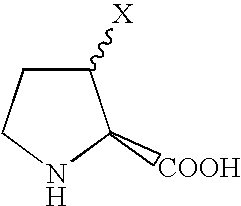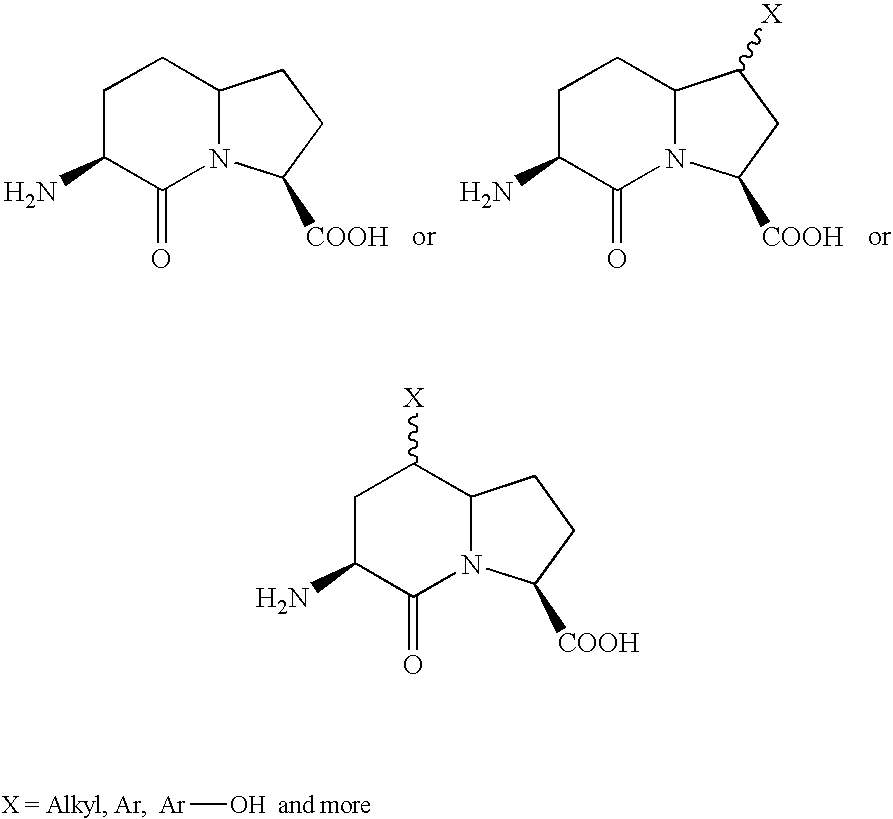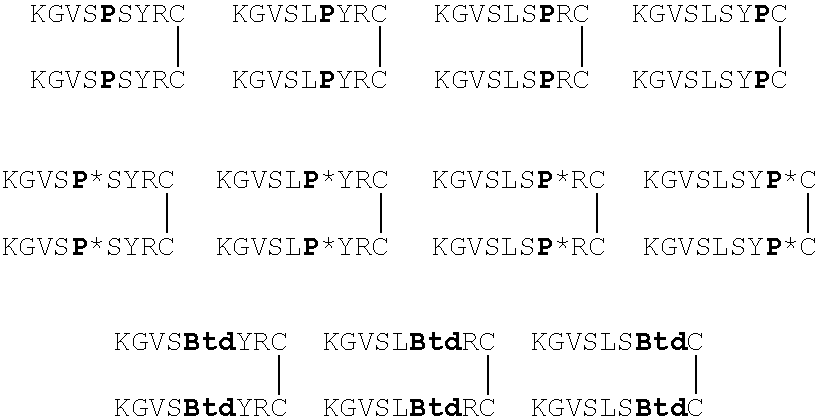CXCR4 antagonist treatment of hematopoietic cells
a technology of hematopoietic cells and cxcr4 is applied in the field of chemokine receptor antagonists to achieve the effects of reducing the need for large-scale marrow harvesting, increasing the circulation of hematopoietic cells, and preventing hematopoietic cell depletion
- Summary
- Abstract
- Description
- Claims
- Application Information
AI Technical Summary
Benefits of technology
Problems solved by technology
Method used
Image
Examples
example 1
[0110]FIG. 1 shows the results of CXCR4 receptor binding assay. To obtain the results, antagonists (competing ligands) (20M) were added to 5×106 CEM cell / ml in the presence of 4 nM 125I-SDF-1. CEM cells were assessed for 125I-SDF-1 binding following 2 hr incubation. The results are expressed as percentages of the maximal specific binding in the absence of a competing ligand, and are the mean of three independent experiments. In FIG. 1, the antagonists tested were:
CTCE0012:KGVSLSYRCPCRFFESHVARANVKHLKILNTPACALQIVARLKNNNRQVCIDPKLKW(SEQ ID NO: 133)IQEYLEKALN-COOHCTCE9908:[KGVSLSYR]2-K-CONH2(SEQ ID NOS: 134 and 135)CTCE9907:KGVSLSYRC(CONH2)-(CONH2)CRYSLSVGK(SEQ ID NO: 136)CTCE0014:KGVSLSYRCPCRFF-GGGG-LKWIQEYLEKALN-COOH(SEQ ID NO: 74)CTCE0018:KGVSLSYRCPCRFF-GGGG-LKWIQEYLEKALN-CONH2(SEQ ID NO: 137)CTCE0019:KGVSLSYRCPCRFF-GGGG-LKWIQEYLEKALN-CONH2 K20 / E24(SEQ ID NO: 138)lactamizationCTCE0020:KGVSLSYRCPCRFF-GGGG-LKWIQEYLEKALN-CONH2 K28 / E24(SEQ ID NO: 139)lactamizationCTCE0016:KGVSLSYRCPCRFF...
example 2
[0111] Table 1 shows the effect of CXCR4 antagonists on hematopoietic cells, particularly primitive erythroide cells and primitive granulocytes (hematopoietic progenitor cells), compared to mature granulocytes. To obtain the data in Table 1, cells were pre-incubated with each of the compounds or saline alone (as control). The cells were then exposed to high dose H3-thymidine, a cytotoxic agent. Rapidly dividing cells accumulate proportionally more of the cytotoxic radioactive thymidine and as a result are preferentially killed. The relative proportion of cells killed by the thymidine treatment compared to the control is indicative of the relative effectiveness of the compounds in increasing cellular multiplication, i.e. increasing the rate of cell cycle progression and DNA synthesis. A higher proportion of killed cells compared to the control is indicative that a compound increases cellular multiplication of the given cell type.
TABLE 1Effect of CXCR4 Peptide Antagonists on the Cyc...
example 3
[0113]FIG. 2 shows the efficacy of CXCR4 antagonists on enhancing the proliferation of human progenitor cells in an in vivo engraftment model.
[0114] In FIG. 2, the cycling status of mature and primitive colony forming cells (CFU-GM; colony forming unit-granulocyte-monocyte precursor, BFU-E; burst forming unit-erythroid precursor; LTC-IC, long-term culture initiating cell) in the suspension of CD34+ cells isolated from the marrow of transplanted NOD / SCID mice was determined by assessing the proportion of these progenitors that were inactivated (killed) by short term (20 min) or overnight (16 hour) exposure of the cells to 20 μg / ml of high specific activity 3H-thymidine (values represent the mean + / − the S.D. of data from up to four experiments with up to four mice per point in each). Significant in the results is the observation that the SDF-1 peptide antagonists are effective at enhancing the proliferation of “primitive” human progenitor cells, as measured by the reduction of cells...
PUM
| Property | Measurement | Unit |
|---|---|---|
| Fraction | aaaaa | aaaaa |
Abstract
Description
Claims
Application Information
 Login to View More
Login to View More - R&D
- Intellectual Property
- Life Sciences
- Materials
- Tech Scout
- Unparalleled Data Quality
- Higher Quality Content
- 60% Fewer Hallucinations
Browse by: Latest US Patents, China's latest patents, Technical Efficacy Thesaurus, Application Domain, Technology Topic, Popular Technical Reports.
© 2025 PatSnap. All rights reserved.Legal|Privacy policy|Modern Slavery Act Transparency Statement|Sitemap|About US| Contact US: help@patsnap.com



